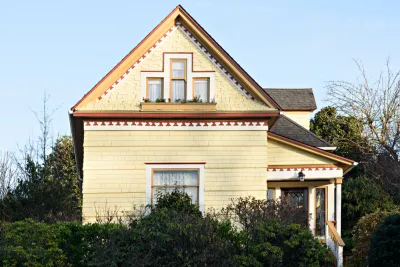In Seattle, most (88 percent) of the city's new housing is being developed in a few small, already dense areas around the city. Most of the city is reserved for single-family housing.

Mike Rosenberg takes a deep dive into zoning in the city of Seattle to examine how it has contributed to the city's skyrocketing residential real estate market. The questioned examined in the article is, "how much of Seattle’s housing is traditional, suburban-style single-family homes, and how that has affected our growth and housing prices."
Rosenberg's analysis finds that with 69 percent o fits residential lots devoted to single-family housing, Seattle's use of residential land is akin to much smaller cities, "[b]ut compared to other peer cities with expensive housing, Seattle generally devotes a lot more of its housing to single-family homes…"
After explaining the residential make-up of the city in other terms, Rosenberg digs into the concept of zoning, which is described as the "whole game" when it comes to housing. According to Rosenberg, because most of the city is limited to single-family zoning, and new buildings have only been added in already dense area, most of the city is not growing in the sense of the size and total of its buildings. That reality has implications for both the homeownership and rental markets, which Rosenberg examines in more detail in the article.
For more on potential changes to the land use scheme currently controlling the market in Seatte, see analysis from March of a proposal to expand the more dense "urban villages" where most of Seattle's growth is located as part of the city's Housing Affordability and Livability Agenda.
FULL STORY: Rapidly growing Seattle constrains new housing through widespread single-family zoning

National Parks Layoffs Will Cause Communities to Lose Billions
Thousands of essential park workers were laid off this week, just before the busy spring break season.

Retro-silient?: America’s First “Eco-burb,” The Woodlands Turns 50
A master-planned community north of Houston offers lessons on green infrastructure and resilient design, but falls short of its founder’s lofty affordability and walkability goals.

Delivering for America Plan Will Downgrade Mail Service in at Least 49.5 Percent of Zip Codes
Republican and Democrat lawmakers criticize the plan for its disproportionate negative impact on rural communities.

Test News Post 1
This is a summary

Test News Headline 46
Test for the image on the front page.

Balancing Bombs and Butterflies: How the National Guard Protects a Rare Species
The National Guard at Fort Indiantown Gap uses GIS technology and land management strategies to balance military training with conservation efforts, ensuring the survival of the rare eastern regal fritillary butterfly.
Urban Design for Planners 1: Software Tools
This six-course series explores essential urban design concepts using open source software and equips planners with the tools they need to participate fully in the urban design process.
Planning for Universal Design
Learn the tools for implementing Universal Design in planning regulations.
EMC Planning Group, Inc.
Planetizen
Planetizen
Mpact (formerly Rail~Volution)
Great Falls Development Authority, Inc.
HUDs Office of Policy Development and Research
NYU Wagner Graduate School of Public Service




























